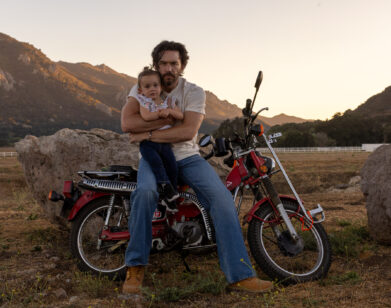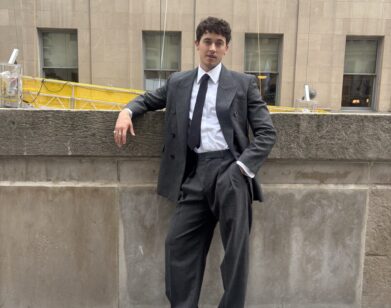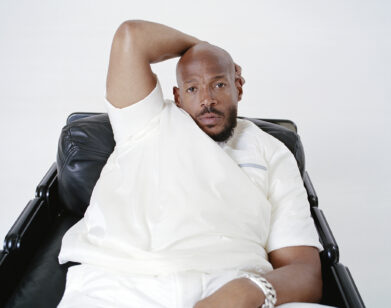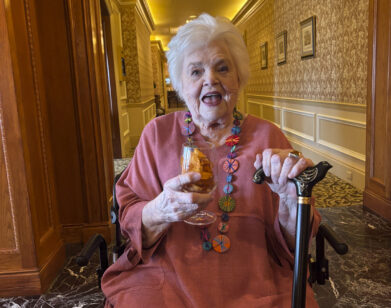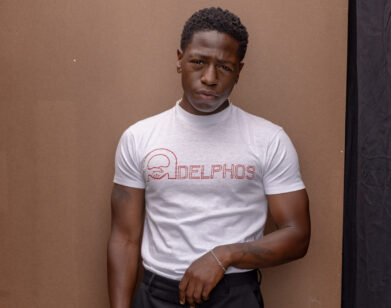Dancing in the Street
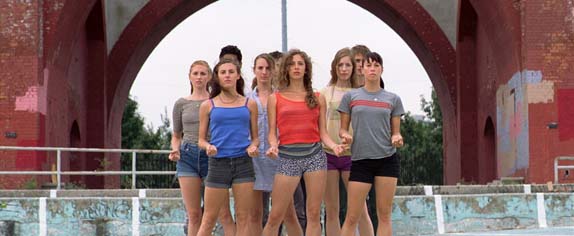
Jerome Robbins’s 1958 NY Export: Opus Jazz, dubbed the “ballet in sneakers,” is enjoying a cinematic renaissance that couples camera and dance with vanguard intimacy and marvel. Co-directed by Jody Lee Lipes (Brock Enright: Good Times Will Never Be The Same) and Henry Joost (Catfish), the film, which premiered at South by Southwest, is the creation of New York City Ballet soloists Ellen Bar and Sean Suozzi, whose passion for the project is realized in each breathlessly innovative expression of the dance.
By no means passive in its scope or restrained by the frame, Lipes’s photography—shot on anamorphic 35mm—dollies alongside and cranes above each piece. Likening Opus Jazz to peppy Gap ads or derivative love letters to the city would overlook the film’s union of narrative and movement. Lipes, who scripted a series of interludes, has revived the fundamental spirit of Robbins’s work—a dance crusade that focused on the relationship between performers and their environment. New York’s urban landscape becomes a veritable stage for expressing the dynamic mettle of youthful frustration, lust, escape, and freedom. From the very first shots, the audience is invited to follow as each character makes his or her way to the first location: Greenpoint’s McCarren Park Pool. Doubled on a bike or lost in thought on the city’s rattling subway, we watch as this diverse group of dancers is vividly portrayed.
DURGA CHEW-BOSE: Can you talk a bit about how this project began?
ELLEN BAR: The ballet was from the 50s but hadn’t been performed in a really long time; Sean and I had never even heard of it. New York City Ballet revived it and we both danced in the revival and Sean basically had the idea to make it a film and to shoot on location all over New York, and to make it real, and to put dancers in regular clothes. He wanted to update it to the present day. He came to me and suggested it.
SEAN SUOZZI: When I told Ellen about it I didn’t think we would actually would. Two days later she had written an eighty-page proposal. We had to get the permission from the [Jerome Robbins] Trust and we knew that right away. She just kind of does stuff like that!
CHEW-BOSE: Was the Trust crazy about the idea at first or apprehensive about your interpretation?
SUOZZI: In writing that proposal we knew that we needed to answer every question that they might have.
BAR: They’re very protective of his work. He was such a perfectionist and since he died, the Trust won’t just let any old person go and perform a Jerome Robbins ballet. They curate it so it’s like professional dancers of a certain quality. It’s very specific.
SUOZZI: The Trust flies people out to make sure the dancers have the right look or the right quality…
BAR: It wasn’t going to be easy, so we built this proposal to show that there was a precedent for it, which obviously West Side Story had a lot to do with, because he had basically taken Shakespeare’s Romeo and Juliet and updated it for modern day. He had filmed out on location in New York City with that similar type of dancing, so we established that there was a precedent, and we really tried to answer any question they had and prove that we were the right people to do it because we understand his work so intimately, and because we danced it ourselves. And in the end we got nine unanimous votes from all the people who had to give their blessing. They were happy that we were trying to re-imagine it for a new generation and that we weren’t just trying to archive something as it was. They were happy we were putting our own artistic stamp on it.
CHEW-BOSE: And then how did you meet Jody?
BAR: Sean and I were friends with our production designer, Ariel Shulman and he introduced us to one of our other co-directors, Henry Joost, and Henry brought Jody on.
CHEW-BOSE: And Jody, you were sold immediately?
JODY LEE LIPES: No, no….I mean I just didn’t know anything about dance and didn’t really care that much about ballet or anything. So I sort of was signing on to shoot and be a part of the first section of the film that’s on the elevated train tracks…
CHEW-BOSE: The High Line, right?
LIPES: Yeah that was the first thing that we actually shot…
SUOZZI: Which was like years before…
BAR: That was in 2007.
CHEW-BOSE: In the documentary by Matt Wolf and Anna Farrell that follows the film, there are clips from the Ed Sullivan show that recount Robbins’s revolutionary take on filming dance. Was that a huge point of inspiration when making the film?
BAR: Well West Side Story was really revolutionary, and I think we were sort of showing that Jerome Robbins had a cinematic philosophy and opinion, and perspective. He wasn’t just a choreographer; he really understood the way the camera works.
SUOZZI: And he would change the spacing in the dance for the camera. That Ed Sullivan footage which was in a studio, he had to change the spacing for that.
LIPES: Yeah, instead of insisting the dance was what it was and whatever the camera could get, he made the dance work with the camera. He really revolutionized dance on film.
CHEW-BOSE: I was curious about the locations and how you found all of them. They add so much character to the dance, but never overtook the dancers or seemed overly manicured…
BAR: Well Jody found all of those locations…
LIPES: And Ariel Shulman, who was the production designer, did a really amazing job. I think the touches that he put in were really subtle. He really changed it from being just a location to being something special. I think a lot of it is that we looked for a really long time. I was brought on to this project about three years ago and at least for the past year and half leading up to the film I was always look for locations. There is this boarded up building in my neighborhood that I always wanted to get inside and so I asked the producers if we could. And I think part of the decisions for picking locations was finding ones that had an old New York, sort of crumbling feel to them. And a lot of them are places that are going to be renovated really soon.
CHEW-BOSE: Oh really?
LIPES: Yeah, like Mccaren Park and that old manufacturing building.
BAR: We literally got into a lot of the locations right before they were about to renovate. It feels like we documented something special.
NY Export: Opus Jazz will have its broadcast premiere tonight on PBS Great Performances as part of the Dance in America Series.

